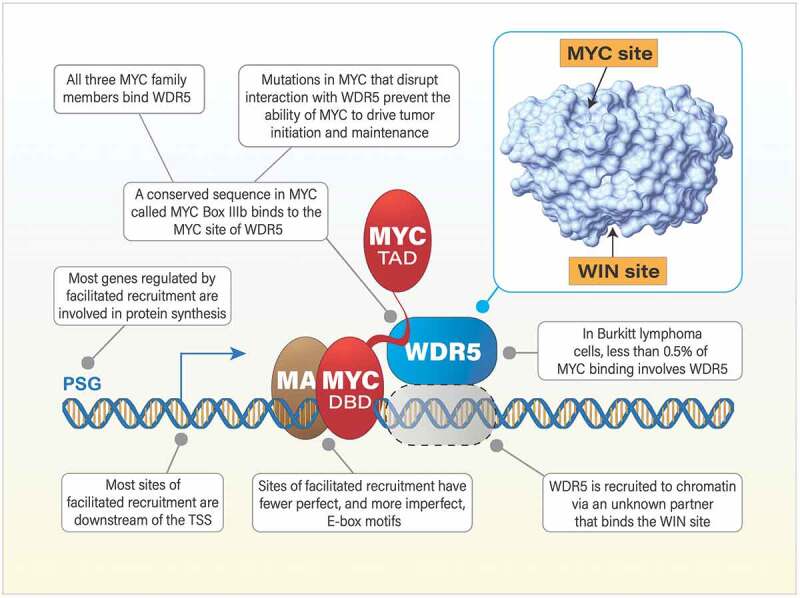Figure 1.

Facilitated recruitment of MYC to chromatin by WD repeat-containing protein 5 (WDR5) provides a new opportunity to therapeutically target MYC. In the facilitated recruitment paradigm, target gene recognition by MYC is an avidity-driven process that depends on (a) the inherent affinity of the DNA-binding domain (DBD) of MYC and MAX for a DNA sequence and (b) interaction of MYC with a pre-bound and proximal molecule of WDR5. In Burkitt lymphoma cells, there are fewer than 100 sites of facilitated recruitment, but most of these occur at “protein synthesis genes” (PSG), which are known to be important for the oncogenicity of MYC. The dependency of MYC on WDR5 to bind to and regulate these genes creates the opportunity to target MYC through WDR5. Small molecule inhibitors against the MYC site of WDR5 should leave WDR5 on chromatin but displace MYC. This prediction has not yet been tested. Small molecule inhibitors against the WIN (WDR5-interaction) site are known to displace WDR5 from chromatin, and our recent paper7 reports that MYC is also displaced from chromatin at PSGs. ‘TAD’ refers to the transcriptional activation domain of MYC. ‘TSS’ is transcriptional start site. E-box motifs are variations on the sequence ‘CACGTG”.
